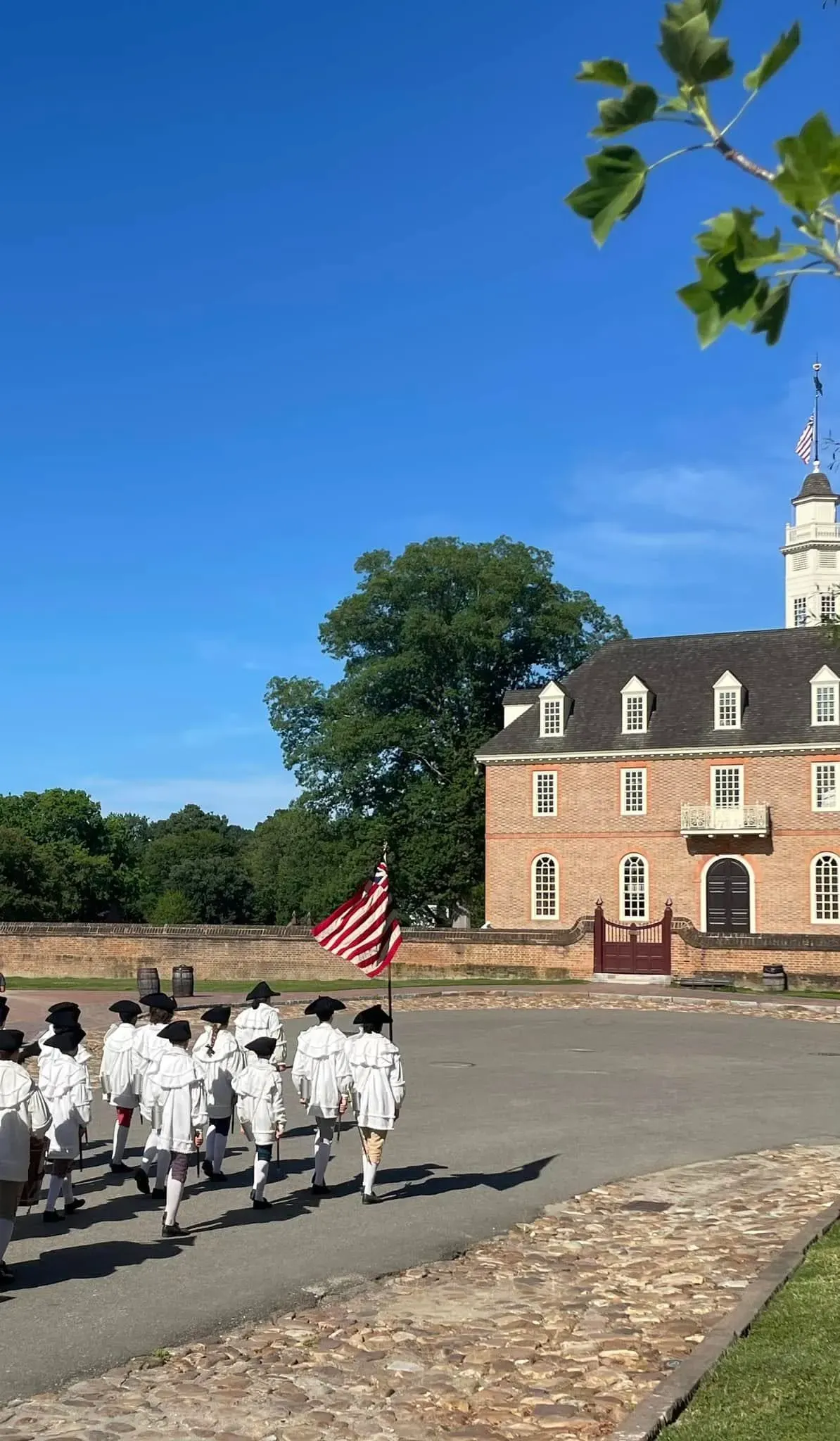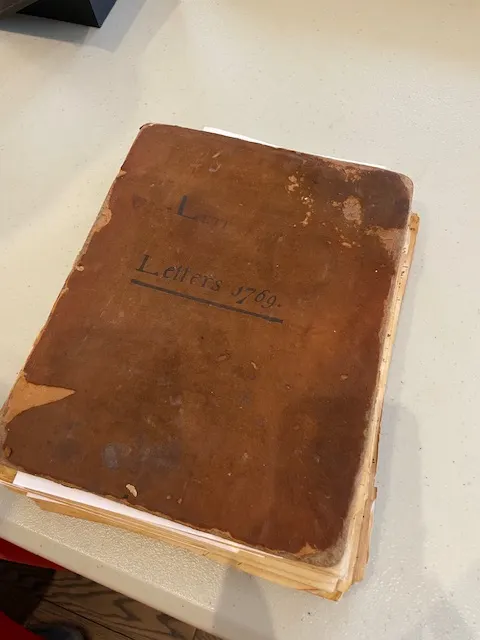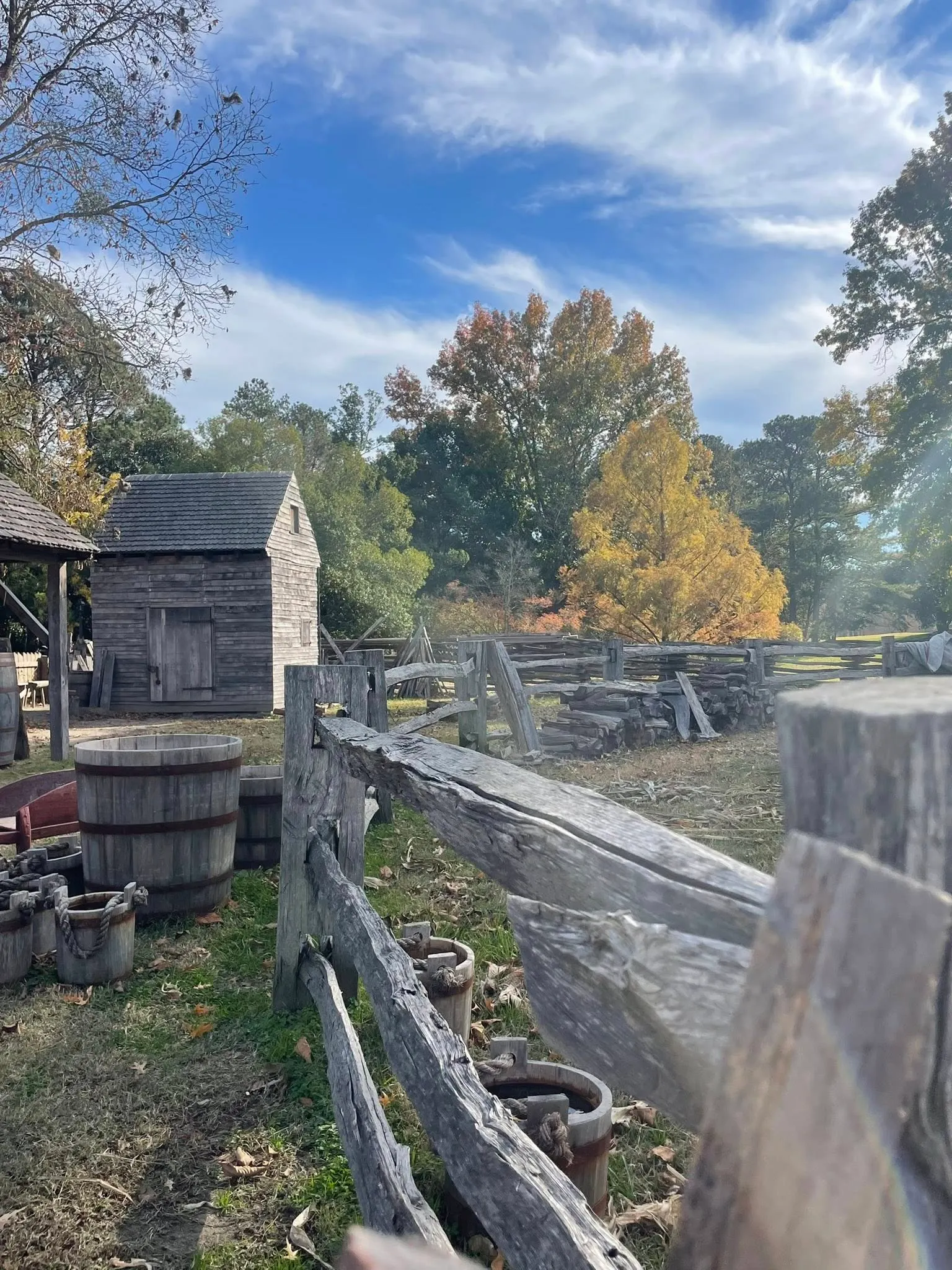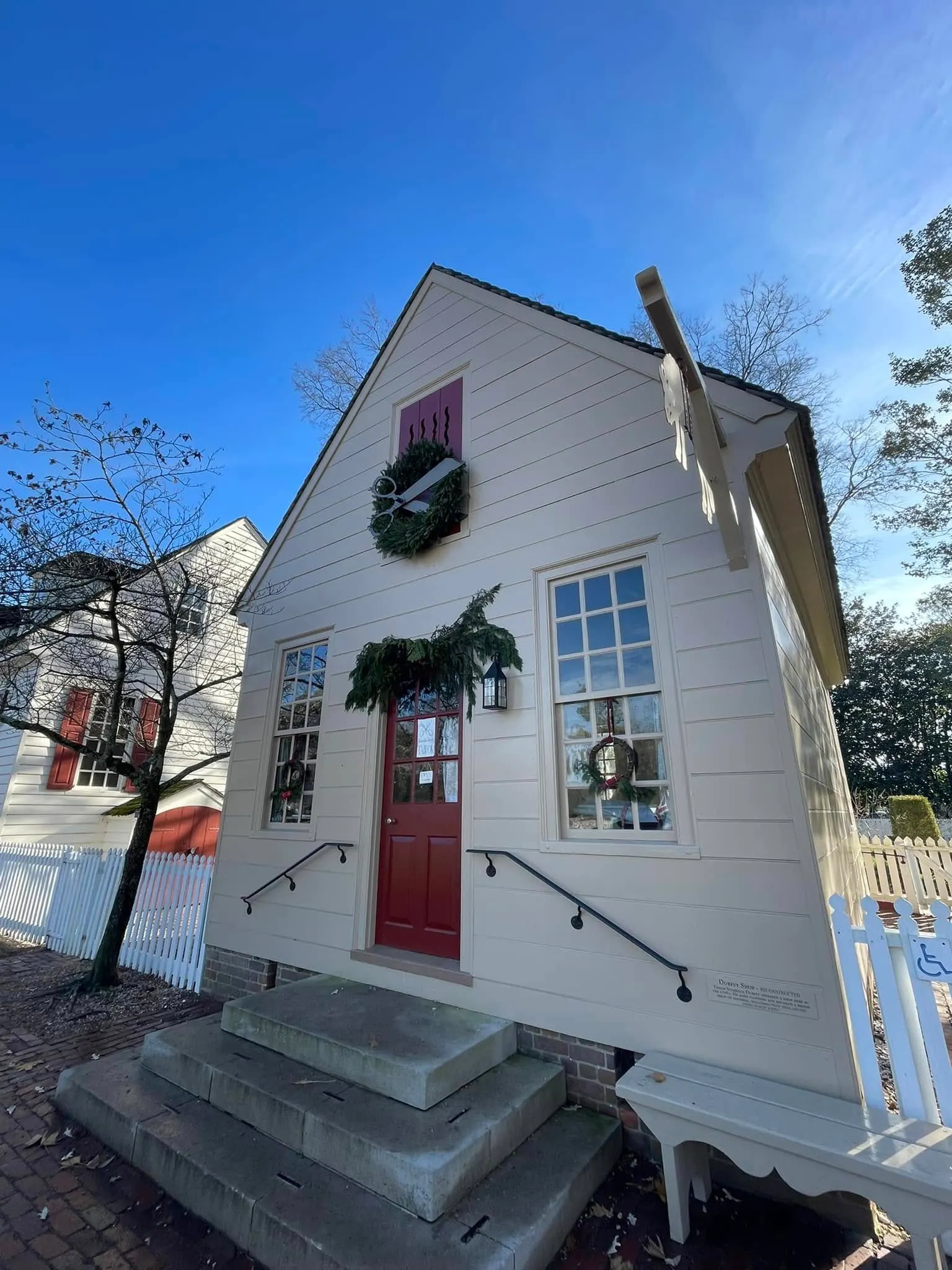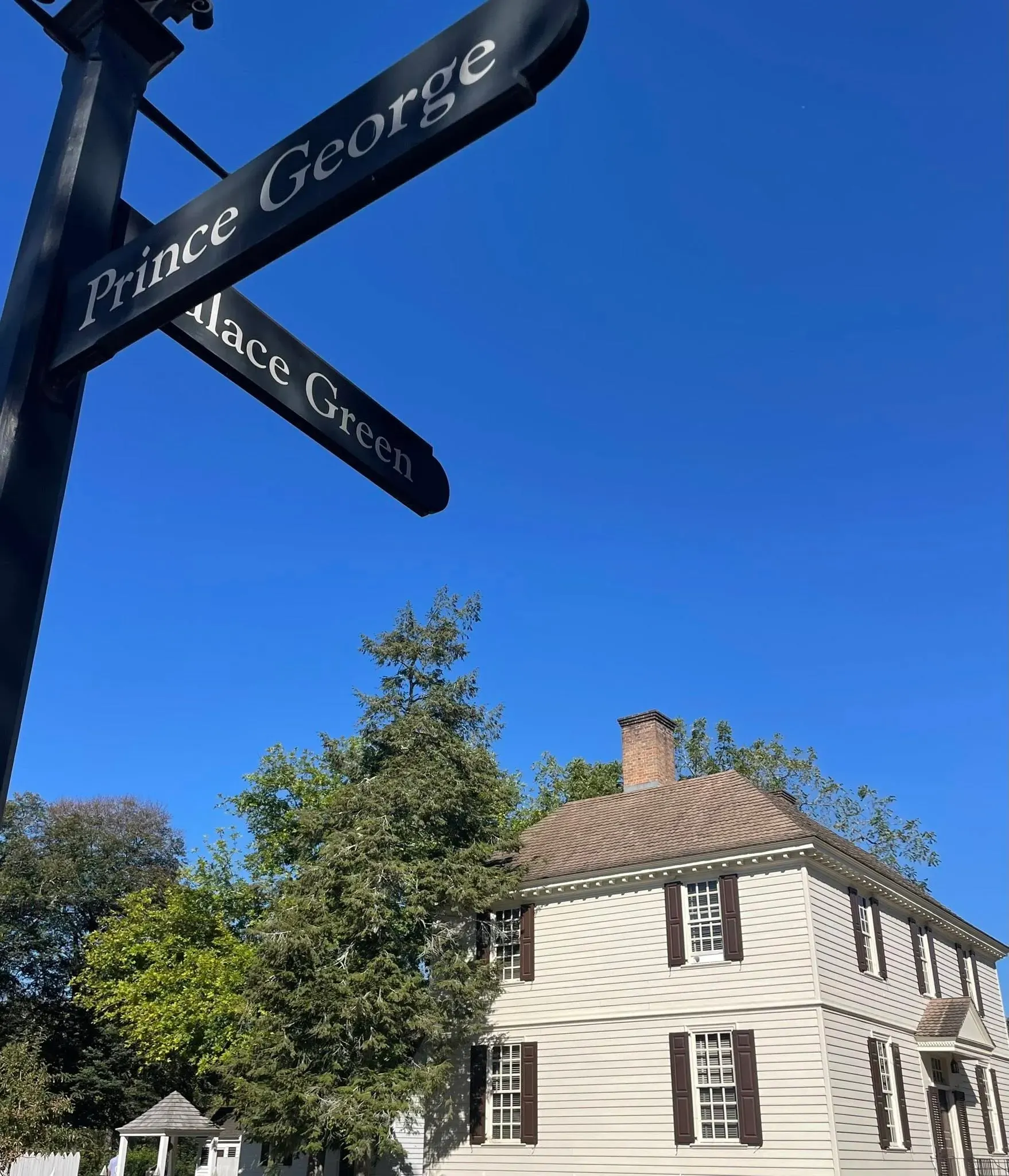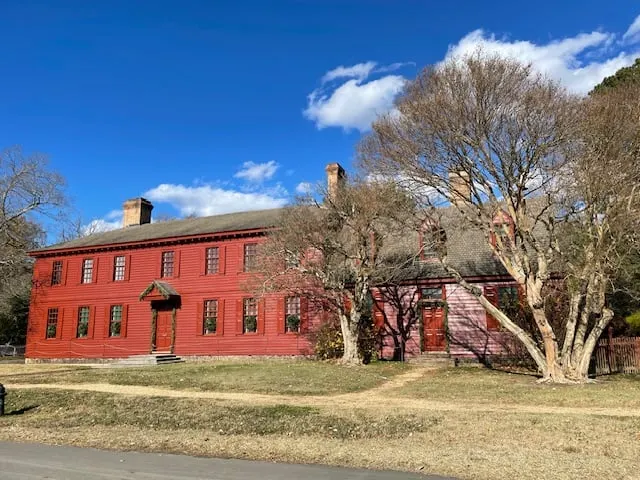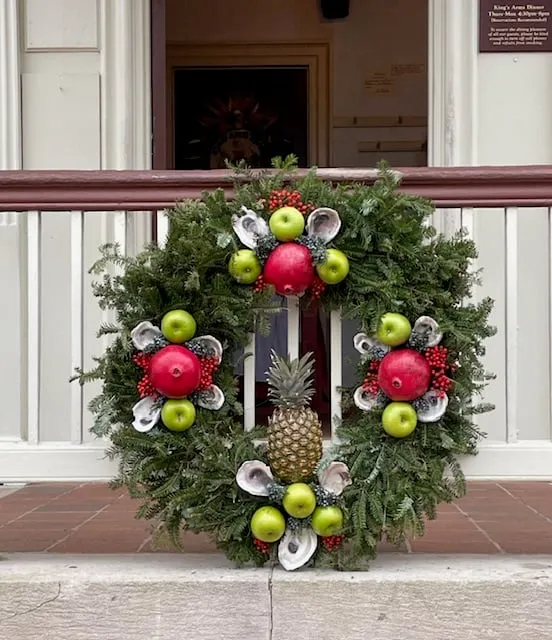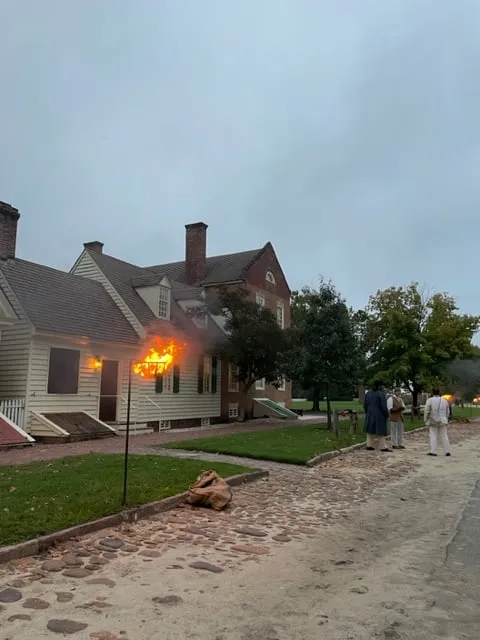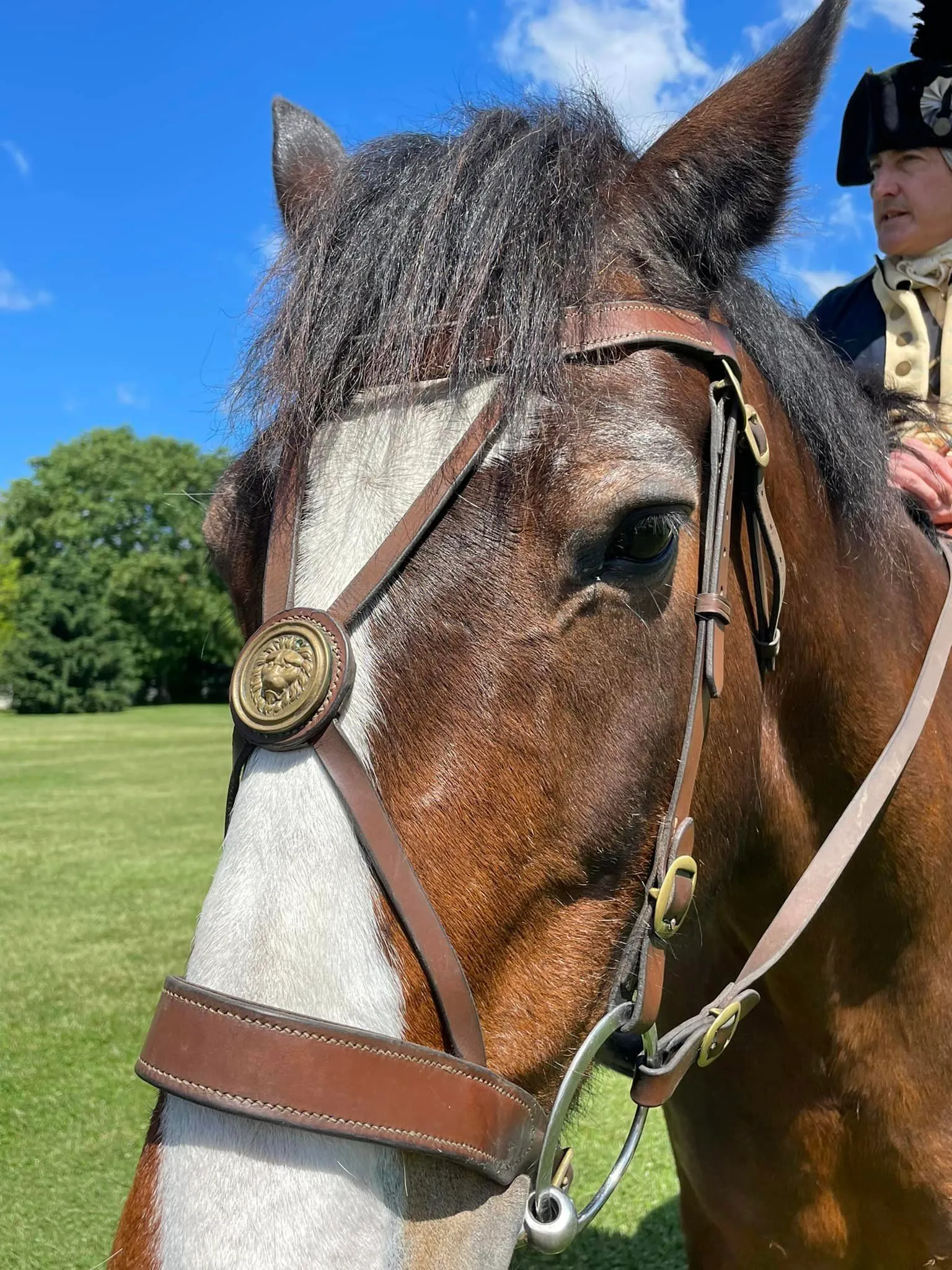Stitching History Together: Revolutionary Tailors, Francis Street’s Archibald, and a Yuletide Tale
An introduction into my focus on tailors during the Revolutionary War period.
I always learn at Colonial Williamsburg’s (CW’s) Tailor Shop. Awhile back, I decided to ask some of the tradespeople around town about books that are tied to their trade- legit ones to paint a solid picture of what they do, who they were, how they lived…
Mr. McCarty, former journeyman tailor at CW, sent me to the children’s section of the library. Not literally of course, but that’s where I found his recommendation: Beatrix Potter’s The Tailor of Gloucester.
It’s a Christmas tale so I loved that of course. But beyond the holiday spirit it conjures, it’s an astute entry into a rabbit hole of everything “tailor.” Just as Mr. McCarty intended I’m sure.
I went 'all over the place' on my Beatrix Potter rabbit hole (how appropriate, right?) of the tailor trade, I'm breaking it down into small bites. And, truly, a chef's tasting, not a filling 5-course meal- I promise! True blogger style.
- review and resource: the book
- role in the American Revolution (because American history and 250th)
- one story: daily life, people of history, relevance and relatability
- resources and calls to action
- closing words from history- a tailor mention in a Virginia Gazette
RELATED: Learn more about the tailor trade in Colonial Williamsburg on YouTube here and click here to see Mr. McCarty’s Instagram account focused on his work.
Disclaimer: As a blogger, I use affiliate links sometimes! I may receive commission from purchases I share; it does not change your price but sometimes you might get a discount.
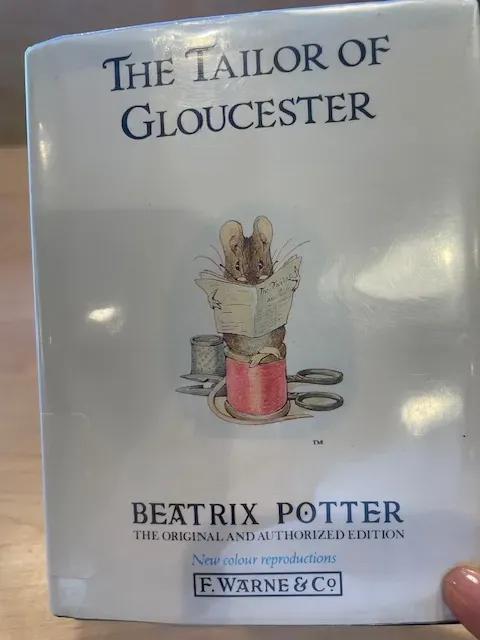
My borrowed copy from Williamsburg Regional Library
Beatrix Potter's The Tailor of Gloucester, a Christmas classic.
I'm starting with the review because that was the original plan for the post- it was to be a book review! The rabbit holes just happened.
But this book is not her so-famous rabbit content; it's about an elderly tailor, a cat, and mice. Lots of mice.
If you're like me, you may have read this turn-of-the-last-century tale MANY years ago. In context, it was read as the children's book it can be. For the history-loving 50-something adult I am today, it's pure gold.
Why this book is legit historical insight, not just a fantastic tale of the magic of Christmas:
- terminology: waistcoats, twists, and more
- atmosphere and culture: the life of a tailor, the importance of nobility, the sense of the era
- art: the iconic drawings in Beatrix Potter books truly bring the historic importance of this book to life
I recommend you get the book if you want something on your shelf in the genre of historic trades, or simply to enjoy at Christmas. In fact, I updated my 'holiday gifts for history lovers' post to add The Tailor of Gloucester!
Side note: you can open a new tab with that holiday gift list here.

Dedication in Beatrix Potter's The Tailor of Gloucester
The role of tailors during the American Revolution.
At home.
Business shifted in the shops at home- not surprisingly. In times of war, it's widely known that businesses, from bakeries to major manufacturers, jump in to support the war effort. In WWII, “Rosie the Riveter” became, and remains, iconic.
The tailor shops of the Revolutionary War period were a vital cog in the wheel of support. From creating tents for soldiers to filling orders for the hunting frocks that were commonly worn, tailors used their skills to support the men in the field.
RELATED: If you want to dive deeper into the support of various trades during the Revolutionary War era, click here to purchase “Manufacturing Independence,” a book I found recommended by the American Museum of the Revolution in Philadelphia.
At camp.
Since the Continental Army was heavily a citizen military, naturally there were tailors who served as soldiers.
And yes, you can imagine the value, as has been discussed with me on visits to CW's military encampment, the value of having one around.
On-site mending of tents, shirts- any textile at camp: invaluable. It's something visitors to CW often get to see happening as the interpreters truly do the work of soldiers.

Military encampment in CW
In enemy territory.
I admit it straight up- I haven’t seen the play “Hamilton” and truly don’t intend to. It’s not my thing. But in researching this post I found out about the “character” Hercules Mulligan.
As a war spy and a tailor, his story (the real one) is fascinating.
Hercules was close with Alexander Hamilton. He was an Irish immigrant who set up a tailor shop in New York City on the eve of the Revolutionary War. Passionate about his new country and the ideals of liberty and independence, he volunteered to serve when war broke out in 1775.
After Washington’s retreat from New York City, his role evolved. With his “clothing emporium” located in the city where espionage became vital, he was perfectly set up to serve the cause through his work as a tailor.
RELATED: Learn more about Hercules here on the American Battlefield Trust’s website.
Have I missed something on the tailors’ role during the Revolutionary War period? I’m confident I have. I know your fellow readers would be as interested as me to learn more- drop a note in the comments, subscribe to the blog using the form on this page and connect by email, or message me using Instagram!

CW Tailor Shop, Christmas decorations 2024
The rabbit hole I took about a local tailor named Archibald Diddep.
So many tailors to research.
You could find upwards of a dozen tailor shops at any given point during the height of Williamsburg’s tenure as the capital city of the largest, most populous, and wealthiest of the American colonies. I’ve always heard this from our local tailors at CW along with others more educated in the history of Colonial Virginia than I am.
As far as the trade itself, while some may have served a specific demographic, especially in larger cities with higher numbers to serve, custom and bespoke was the norm.
Whether a man was enslaved or on the Governor's Council, he needed a tailor. What I've learned time and again through the expertise found in CW: the cost was in the textiles used, not in the labor. In my mind, the tailor shop is one place you could find all people, standing side-by-side.
RELATED: If you're interested in running down a rabbit hole of the trade in a new tab, click here for a deeper dive into 18th century custom tailored clothing. You'll land on a blog post on the Custom Tailors & Design Association's website.
The Revolutionary War era tailor whose shop I chose to find.
Archibald Diddep.
Why?
He lived in Williamsburg and so do I. It started with me searching the Virginia Gazettes at CW’s John D. Rockefeller Library (aka the Rock), for mentions of tailors during the Revolutionary War period- and Diddep’s name pulled me in!
Diddep’s House is designated on Francis Street. Specifically: block 2, lot 255, building 7 according to the property reference held in the library’s files.
That said, I haven’t been able to fully confirm the exact building (or section of one) that was his shop, but it was definitely part of what I’ll call the William Finnie House complex. So I went over there to get a photo - or 10.
It's possible that with the word "contiguous" listed in the property file's description, it was a wing of the Finnie House, at the time owned by Dr. Pasteur, a popular physick and apothecary in town. But maybe not- something someone with more architectural and historical depth into the town may know?
When Diddep passed away in 1784, it was held by his estate to 1787. After, the property was sold to John Carter Byrd. Ultimately, it was acquired and able to be part of the museum. The main house itself is one of CW's original 89 structures.
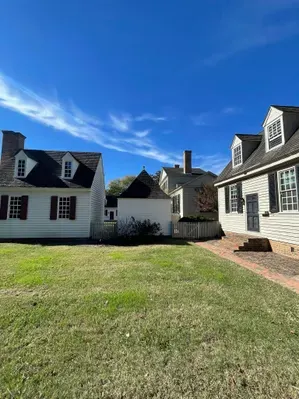
Rear view of Finnie House and outbuildings
Who was Archibald?
You won't find much on Google. You'll likely be directed to where I started before Googling- CW's library. What I was able to find at the Rock and on their website:
1) He was a member of the Masonic Lodge- listed as such in W&M College Quarterly Historical Papers Volume I, 1892-93. In this document, I can tie him to being a member at the same time as Cole Diggs.
That name struck me because Cole Diggs' historic Yorktown home currently serves as Mobjack Coffee, one of my favorite local roasters.
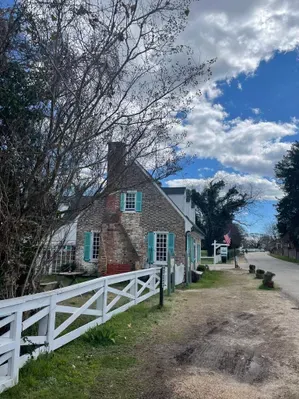
Cole Diggs House, Yorktown, Virginia
2) He supported the idea of public education! CW owns a rare document that indicates this statement to be valid. The document dated July 15, 1773 is a subscription list for a public school in Williamsburg.
I'm digging deeper on this, but my understanding is by signing onto this list, the men committed to being financial backers. (Do you know for sure? Please share as I continue my research!)
Diddep is listed with men like John Blair of Williamsburg, who ultimately became one of our earliest United States Supreme Court Justices, appointed by President Washington.
Side note: John Blair's house is directly across from what currently serves as CW's tailor shop. And the shop has created a reproduction of a rare find: one of Blair's coats and waistcoats.
You can click here to open the reference to the subscription list in a new tab.
If you've heard of Archibald Diddep and have more information, please share! And/or if you know of any local-to-you 18th century tailors, please share their stories with us! (again, the comments or message me and I can share!)
Maybe, just maybe, this post will serve as a conduit to bringing out more on a man who was a tailor in a town so tied to our American Revolutionary War history.
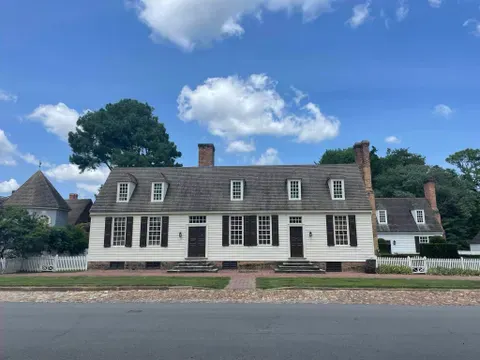
Blair House, Duke of Gloucester Street in CW
Resources for you to dig deeper if you’re into this.
A book that includes tailor terminology.
I was walking through the stacks of the Rock to find a resource on tailors and got super-sidetracked. I found a tome on 18th century vocabulary. I won’t lie, I can’t remember what I was headed to find. After grabbing this book, I was lost in it for an hour.
So yes, I’m dropping some 18th century terms I found related to the tailor trade. Of course, specific to the Revolutionary War era. Just because.
Source: Colonial American English, Richard M. Lederer, Jr. c 1985, A VERBATIM Book, Essex Connecticut
frock: (n.) A man’s short, loose hunting shirt worn over his other clothes. Ebenezer Denny’s 1781 Journal said that Lafayette’s men were: “chiefly all light infantry, dressed in frocks and overalls of linen.” (page 97)
halfthick (n.) A kind of course, woolen cloth. A 1774 Philadelphia newspaper advertised, “wiltons, baizes, halfthicks, rattinets.” (page 110)
persian: (n.) A thin, silk cloth, primarily for linings. Originally from Persia, it was later imitated in France and England. A 1775 Philadelphia newspaper advertised, “White, blue and pink Persians.” (page 170)
twist: (n.) A thread made by twisting strands. A 1778 Boston newspaper advertised, “India Dimothy, Buttons, and Twist, Snail Trimmings.” (page 234) --- also used as a main theme in the Potter book!
shop note: (n.) A due bill, good for merchandise. A 1770 Maryland letter said, “The following will Answer the Shop note you wrote for.” (Page 211)
coatee: (n.) A short close-fitting military tunic. Harper’s Magazine in 1775 reported, “Every officer to provide himself with a blue cloth Coatie faced and cuffed with scarlet cloth.” (Page 52)
Click here to get the book!
Mr. McCarty.
Mr. McCarty’s current focus: sharing historical clothing with the world and Instagram is where you can find him. His handle is malibudarcy and his expertise and passion for 18th and 19th century clothing is contagious. Click here to follow him!
Tell me: do you know someone like Mr. McCarty, keeping this trade alive? Do you know of a shop or museum educating the public in the tailor trade like is done at Colonial Williamsburg?
Please share in the comments or message me using Instagram! Or better: as mentioned earlier, subscribe to the blog using the form on this page and connect with me through email.
2 museums I love.
1) Of course, I always want history-lovers to come to Williamsburg! Visit CW. The masters, journeymen, apprentices, and interns of the trades are a wealth of knowledge. Most definitely dedicate time to the tailor shop if you're in CW.
But also: check out the military encampment where, as the 250th is in full-swing, the interpreters are wearing frocks they had a hand in making authentic to the Virginia Regiment that was at the Magazine in November of 1775 (and will continue to dress era-appropriate as always).
Click here for tickets and information.
2) There's another local museum I recommend for seeing the Revolutionary War uniforms, clothing, and tents: the American Revolution Museum at Yorktown! The people you'll find there are outstanding resources for everything related to Yorktown's famous battle and beyond.
Click here for tickets and information. They have an encampment set up, interpreters onsite, and clothing to view in the museum.
Let me help you dig deeper IRL.
And that said, I’d love to give you a customized tour of CW. I can go further: I'm offering curated travel itineraries, going outside the borders of CW.
Click here to book a call and get started.
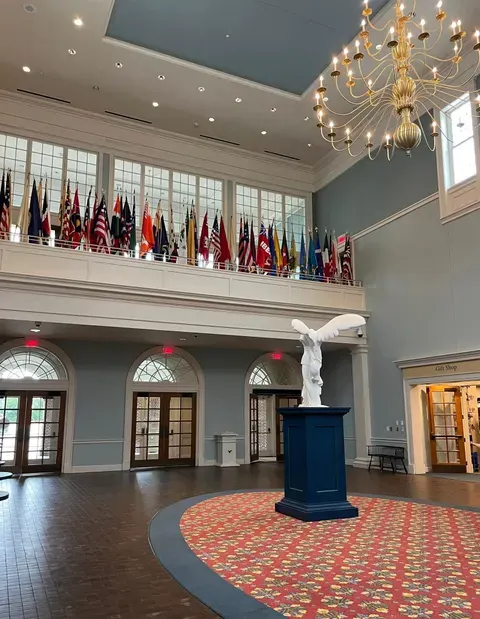
Entrance, American Revolution Museum at Yorktown
Closing words from history:
Gazettes are fantastic resources. Here is the specific entry I found that got me focused on Archibald. I searched the Rock’s online catalog then looked up the edition in person to find the specific text - click here to see the source, Rind’s Virginia Gazette, Thursday June 3, 1773, No. 369, page 3
ARCHIBALD DIDDEP,
T A I L O R
WILLIAMSBURG,
Takes this method of informing the public that he has removed from his former habitation to a houfe contiguous to Doctor Pafteur’s, where he carries on his bufnefs in all its different branches. He returns his moft grateful acknowledgments to all thofe who have hitherto been pleaded to favour him with their custom, and hope for a continuance of it, as they may rely upon their work being executed with the greateft care and punctuality, and on the moft reafonable terms.
He also makes L A D I E S
RIDING HABITS
In the moft genteel manner.
-------
Are you enjoying the history I'm sharing on this blog? Use my online tip jar and buy me a coffee:
There is a huge practical disclaimer to the content on this blog, which is my way of sharing my excitement and basically journaling online.
1) I am not a historian nor an expert. I will let you know I’m relaying the information as I understand and interpret it. The employees of Colonial Williamsburg base their presentations, work, and responses on historical documents and mainly primary sources.
2) I will update for accuracy as history is constant learning. If you have a question about accuracy, please ask me! I will get the answer from the best source I can find.
3) Photo credit to me, Daphne Reznik, for all photos in this post, unless otherwise credited! All photos are personal photos taken in public access locations or with specific permission.

